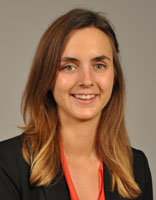 Jeffrey Crowley, Distinguished Scholar and Program Director of the National HIV/AIDS Initiative at the O’Neill Institute for National and Global Health Law, spoke with our class about the need for advocacy and other impact-focused organizations to distill their initiatives as an organization into one base message and action point. Understanding the implications and best practices that can bridge the gap from a far-removed epidemic to a comprehensible and actionable initiative for a legislator is perhaps the most important element of all. Refining the message and ask, Crowley says, will allow for greater probability of uptake by potential partners, including legislators. Within the scope of the translation, being able to bring a situation that may be a world away into relatable terms is a great undertaking, and one that must be done in measured terms. Crowley also discussed the balance of reaching the most senior member of a team versus finding an advocate, who is well enough progressed within the firm to solicit change. An ally who believes in your organization is more important than the title they hold.
Jeffrey Crowley, Distinguished Scholar and Program Director of the National HIV/AIDS Initiative at the O’Neill Institute for National and Global Health Law, spoke with our class about the need for advocacy and other impact-focused organizations to distill their initiatives as an organization into one base message and action point. Understanding the implications and best practices that can bridge the gap from a far-removed epidemic to a comprehensible and actionable initiative for a legislator is perhaps the most important element of all. Refining the message and ask, Crowley says, will allow for greater probability of uptake by potential partners, including legislators. Within the scope of the translation, being able to bring a situation that may be a world away into relatable terms is a great undertaking, and one that must be done in measured terms. Crowley also discussed the balance of reaching the most senior member of a team versus finding an advocate, who is well enough progressed within the firm to solicit change. An ally who believes in your organization is more important than the title they hold.
Our conversation with Mr. Crowley reminded me of a few studies I’ve read over the years that highlighted the difference in fundraising efficacy when an organization would either share a general statistic, say that 33 million people are living with HIV/AIDS, as opposed to sharing a story about an individual patient. The latter approach proved more successful than the former. If you give someone too much information, or if they feel their impact would be inconsequential given the scope of the problem – that there are 33 million people in need of your help – people are likely to remain inactive. Here too, as Crowley points out, the need to distill the message of an epidemic into terms where a potential partner organization has a defined role with particular impact goals attached to it is important. The question remains, beyond sharing a personal story, what other tools do we have to translate the need when you can’t bring each potential partner or donor to the peri-urban slums of Nairobi?
Our next speaker, Wendy Taylor, Director at the Center for Accelerating Innovation and Impact (CAII) at USAID, provided us with a vantage point that begins to answer that question. Taylor spent time speaking broadly about CAII and its role as an organization that helps to identify, develop and introduce health innovations into the developing world. Taylor gave our class a deeper understanding of the innovation landscape that the CAII is currently developing including both its initiatives as well as its frameworks to standardize and organize the data they are gathering. This will eventually aid in the translation of the scale of problems as well as the impact of potential solutions.
Both Crowley and Taylor stressed the importance of understanding how a given innovation or initiative fits into the greater context of a community, country or the world. Learning how to make partnerships beneficial for all stakeholders and how to utilize past failures and successes to move forward more efficiently and effectively in the future is a key determinant of success.
